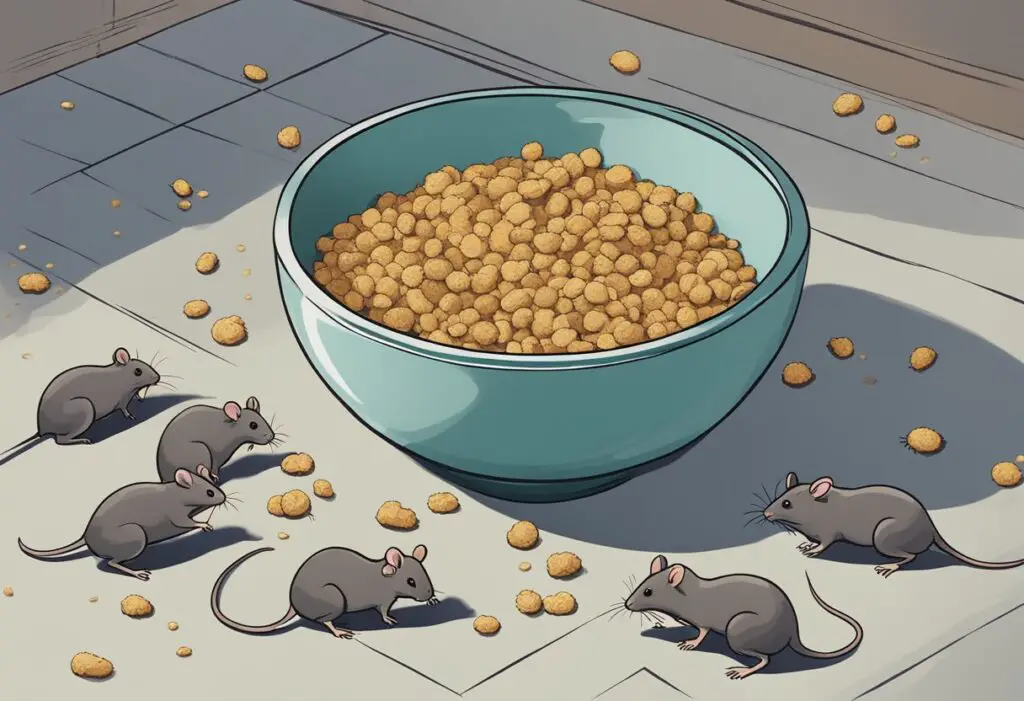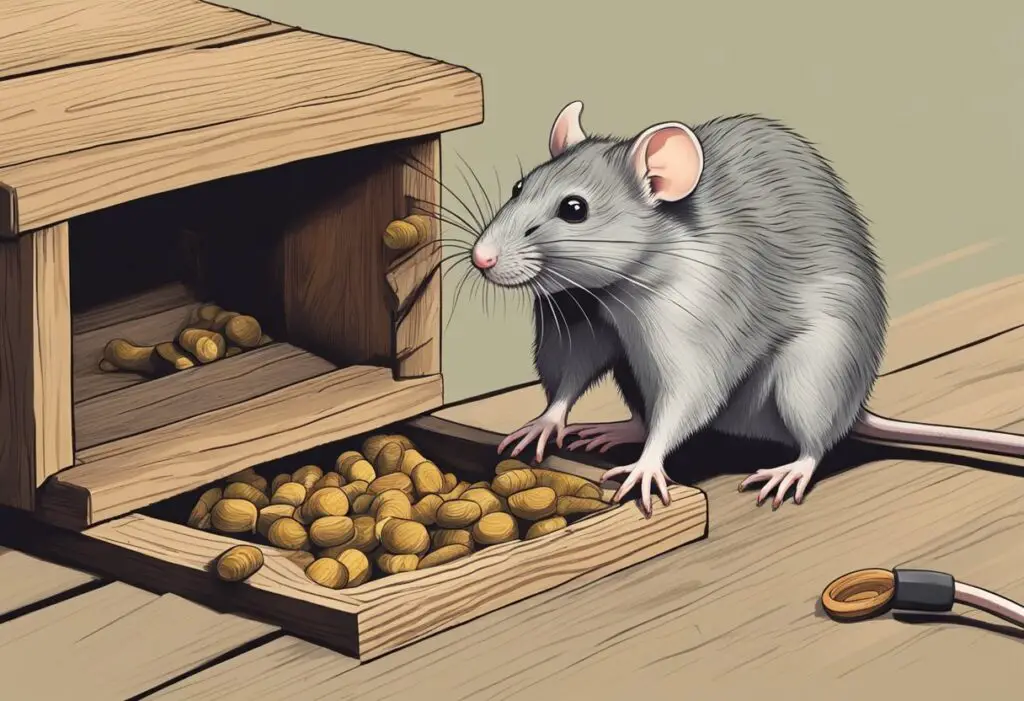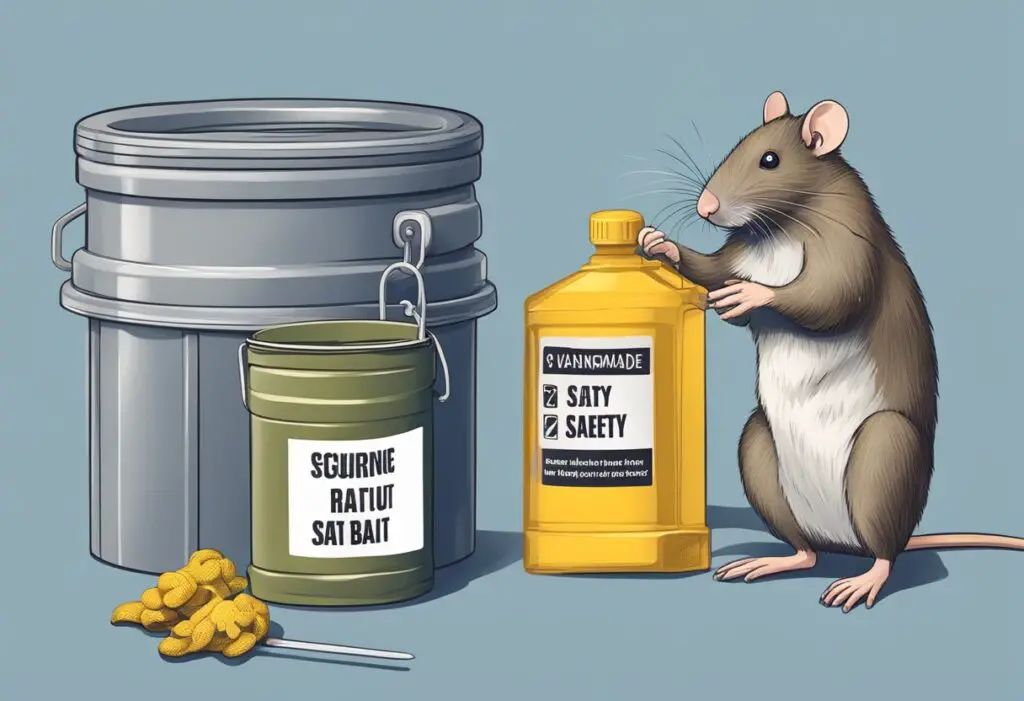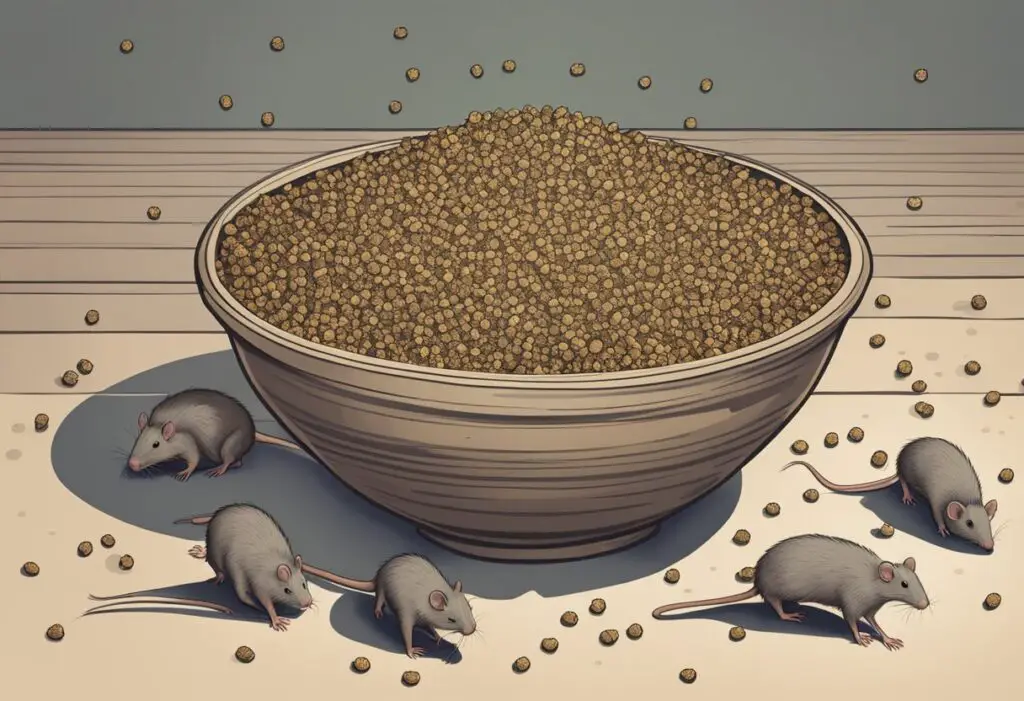Dealing with a rat problem can be frustrating, but you don’t always need to turn to commercial products to manage the situation. Homemade rat baits can be an effective and economical solution for rodent control. A simple mixture of baking soda, sugar, and flour is incredibly effective for attracting and eliminating rats. The baking soda creates gas that the rats can’t expel, ensuring they succumb to the bait.

Another popular choice involves using peanut butter mixed with baking soda, which you then roll into small balls. Rats find peanut butter irresistible, making this method very effective. Alternatively, ammonia mixed with water and detergent can also serve as a potent homemade rat poison, ensuring versatility in your rodent control strategy.
For those who prefer a less toxic option, consider using instant mashed potatoes or a mixture of boric acid and chicken broth. Each of these methods has its own benefits and can be tailored to your specific needs, making it easier for you to handle your rat problem without harsh chemicals.
Understanding Rat Behavior

Understanding the behavior of rats is crucial in effectively managing and preventing infestations. Knowing their species, what attracts and repels them, and how to monitor their presence can help you control rat populations more effectively.
Common Rat Species
There are two main types of rats that often cause problems: the black rat (Rattus rattus) and the brown rat (Rattus norvegicus). The black rat, also known as the roof rat or ship rat, is usually slimmer and found in higher locations like rooftops or attics. The brown rat, commonly known as the Norway rat, is bulkier and prefers to stay close to the ground, often burrowing in the soil or residing in basements.
These species differ not only in appearance but also in behavior. Brown rats are generally more aggressive and prolific, making them more of a health hazard due to the diseases they can carry. Black rats are more agile and can easily climb walls or other surfaces to access food and water. Effective rat control begins with identifying which species you’re dealing with.
Attractants and Repellents
Rats are notorious for being opportunistic feeders. They are attracted to a wide variety of food sources, including grains, fruits, meats, and even garbage. Norway rats and roof rats have different preferences; the former tend to prefer grains and meats, while the latter are fond of fruits and vegetables.
Certain smells and substances can act as rat repellents. Strong odors like peppermint oil, ammonia, and even predator urine can discourage rats from entering your home. Make sure to store food in airtight containers and regularly clean areas where food is prepared or consumed to minimize attractants. Maintaining a clean environment significantly helps in preventing a rat infestation.
Monitoring Rat Activity
Monitoring rat activity is essential for timely pest control. Look for rat droppings, gnaw marks, and tracks to identify areas with high rat activity. These signs can help you locate their nesting sites and food sources. You may also notice grease marks along walls or pipes where rats frequently travel.
Use snap traps or electronic traps to catch rats and note where you have the most success. Monitoring tools like rodent detection stations can help you keep track of the rat population over time. Regular monitoring allows you to assess the effectiveness of your rat control measures and adjust strategies as needed. Keeping an eye on these signs is crucial to preventing a full-blown rat infestation.
Safe Handling and Precautions

When dealing with homemade rat bait, it’s important to take specific safety measures to prevent health hazards. This section covers how to use protective equipment and understand the potential toxicity of various ingredients.
Using Gloves and Disinfectant
Always wear gloves when preparing or handling any type of poison baits. Gloves protect your skin from potentially harmful chemicals and reduce the risk of cross-contamination. Opt for disposable gloves and make sure to discard them immediately after use to prevent accidental contact.
Use a strong disinfectant for cleaning any surfaces that come into contact with the bait. Bleach is highly effective but should be used cautiously—avoid mixing it with other chemicals, particularly ammonia, as this can produce toxic fumes.
Regularly cleaning your tools and surfaces with bleach or another potent disinfectant ensures you mitigate risks like infestation and possible disease spread. This practice is especially important if you have pets or children in your home.
Understanding Toxicity
When creating homemade rat poison, understanding the toxicity of different ingredients is crucial. Products like boric acid or plaster of Paris can be highly effective but are also dangerous if ingested by humans or pets.
Be aware of how these substances interact with other elements. For example, stomach acid can react with certain compounds to produce gas, causing internal damage when consumed by rodents. This is why some recipes call for ingredients like baking soda.
Keep bait out of reach of children and pets. Immediate medical attention is necessary if accidental ingestion occurs. Also, always label and store these substances properly to avoid accidental misuse.
These precautions will help you keep your household safe while effectively managing your rodent problem.
Homemade Rat Poison Recipes
Creating your own rat poison can be an effective way to handle a rodent problem using household ingredients. These recipes involve everyday items like baking soda, boric acid, and even natural alternatives like essential oils.
Baking Soda Based Recipes
Baking soda is a common ingredient in many DIY rat poisons. When ingested by rats, baking soda reacts with stomach acids to produce gas, which rats cannot expel. This leads to lethal internal pressure.
Baking Soda and Peanut Butter:
- Mix equal parts baking soda and peanut butter.
- Form small balls and place them strategically in affected areas.
Flour and Sugar Mix:
- Combine 1 cup of flour, 1 cup of sugar, and 1 cup of baking soda.
- Place the mixture in shallow dishes around your home.
Chocolate Powder Option:
- Blend 1 part chocolate powder with 1 part baking soda.
- Scatter this mix in areas frequented by rodents.
Boric Acid Mixtures
Boric acid is another potent ingredient against rats. It dehydrates their bodies and disrupts their digestive system.
Peanut Butter and Boric Acid:
- Mix boric acid powder with peanut butter until it forms a thick paste.
- Roll into small balls and place near rat hotspots.
Cornmeal and Boric Acid:
- Combine equal parts cornmeal and boric acid.
- Add a bit of water to make a paste, then form small balls.
Flour and Sugar Mixture:
- Mix 1 cup flour, 1 cup sugar, and 2 tablespoons boric acid.
- Set in small, low dishes where rats are known to travel.
Natural Alternatives
Natural alternatives involve ingredients that deter rats rather than kill them. This can be a humane option for those who prefer to keep chemicals out of their homes.
Eucalyptus and Peppermint Oil:
- Add a few drops of eucalyptus or peppermint oil to cotton balls.
- Place these in places where rats enter or frequent.
DIY Rat Repellent:
- Create a spray with water and a few tablespoons of peppermint oil.
- Spray this mixture around the perimeter of your home and any possible entry points.
Nut Butter Trap:
- Use nut butter as an attractive bait in humane traps.
- Release the captured rats far away from your home to prevent re-entry.
DIY Rat Bait Stations and Traps
Creating your own rat bait stations and traps can be an effective and affordable way to manage a rodent problem. Below, you’ll find detailed steps on how to build a simple bait station and construct homemade traps using easily obtainable materials.
Building a Simple Bait Station
For a basic bait station, you only need a few materials: a container, poison bait, and some household tools. Start by selecting a sturdy container with a lid that can secure the bait inside but allows rats to enter. A PVC pipe or a sturdy cardboard tube can also work.
Cut holes on opposite sides of the container or pipe for the rats to enter and exit. Use a saw or a drill to make clean cuts. Place the poison bait securely inside, ensuring it is not easily accessible to pets or children. This setup ensures that rats can feed on the bait safely within the station, away from non-target animals.
Label the station clearly to indicate it contains poison. Place the station along walls or areas where you have seen rat activity. Check and refill the bait regularly to maintain its effectiveness.
Constructing Homemade Traps
Homemade traps can be just as effective as commercial ones. One popular option is the bucket rat trap. For this, you’ll need a bucket, a plank of wood, and some bait. Balance the plank on the edge of the bucket, securing it so that it acts as a seesaw. Place bait on the end overhanging the bucket.
As the rat steps onto the plank to reach the bait, its weight will tip it into the bucket. You can add water to the bucket for a more humane end or leave it empty if you plan to release the rats later.
Glue traps are another simple DIY solution. Spread an adhesive substance on a board or cardboard and place bait in the center. The rats will get stuck as they try to reach the bait, making it easy to trap them. Be cautious with glue traps as they may cause distress to the captured animal.
Whether you choose a bait station or trap, always handle with care and regularly monitor and maintain them for best results.
Preventing Future Infestations

To ensure effective rodent control, consider sealing any entry points rats might use. Cracks in walls, gaps around pipes, and vents are common access points. Use materials like steel wool or caulk to block these areas.
Regularly inspect your home for any signs of rats. Look for droppings, gnaw marks, or shredded materials. Identifying these early can help you take action sooner.
Keep your living space clean and clutter-free. Proper sanitation greatly helps in getting rid of rats.
Important tips:
- Store food in airtight containers.
- Clean up crumbs and spills immediately.
- Dispose of garbage regularly.
Outdoor maintenance is equally crucial. Trim branches and shrubs that are close to your house.
Consider using diy rat bait to monitor and control small infestations. Ingredients like peanut butter and baking soda can be effective. For larger issues, consulting a professional exterminator may be necessary.
Tip: Avoid leaving pet food or water bowls outside overnight. These can attract rats.
By focusing on these simple steps, you make your home less appealing to pests and improve your rat control strategy.








